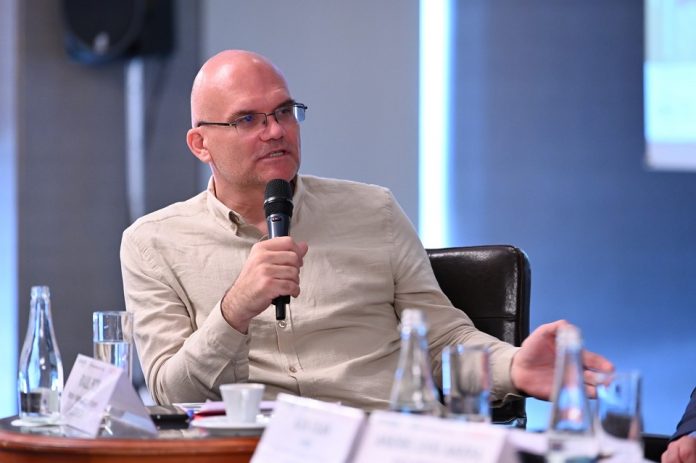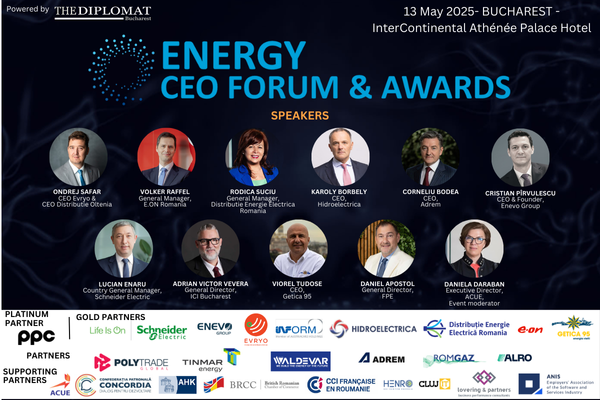Text by Raul POP, Programs Director @ECOTECA
We start from a seldom-spoken truth: business decarbonization is not an easy process to define, start and run within an organization, requiring a certain investment effort both from the perspective of the size of the business and its sector of activity. That is why such an effort should also be seen as an opportunity to innovate and grow in a sustainable way. Ultimately, alongside its market, any company must evolve and become increasingly sophisticated.
It is essential, to begin with, that a company assesses its volume of Carbon emissions and the sources from which they arise, for which it is directly or indirectly responsible as a result of its productive and commercial operations; identifying options for reducing them becomes quite obvious. For example, if 70% of carbon emissions come from the energy sources used, it is simply natural for decarbonization efforts to start from this reality and order of priorities. Tree planting once a year will unlikely enable a bank to offset its data centers carbon emissions, for example, or the heating technology of a hotel. The very discussion of compensation itself has its controversies (which we will probably talk about at a later time).
What is decarbonization and why is it important for entrepreneurs?
Let’s start with the basics: “decarbonization” refers to the process of reducing carbon dioxide (CO2) emissions generated by a company’s activities. This may involve switching to renewable energy sources, improving the energy efficiency of processes, reducing waste and other initiatives aimed at minimizing the negative impact on the environment.
For the extended scope of influencing emissions (objectives 2 and 3), i.e. at the level of trading partners, the company can even reach quite drastic decisions such as giving up certain suppliers or entire product lines. The company may itself be one of the suppliers targeted for such a decision by a significant customer with exposure to financial markets.
Going back to what the company can do concretely, switching to renewable energy sources or improving energy efficiency – leading of course to reductions in consumption -, in addition to reducing carbon emissions can reduce the utility bill and bring long-term cost savings.
Beyond companies’ preferences or reluctance, many countries have regulations that compel companies to adopt sustainable practices, and business decarbonization can help entrepreneurs comply with these regulations as to avoid fines or other negative consequences associated with non-compliance. In addition, more and more consumers are becoming aware of environmental issues and the demand for sustainable products and services is increasing. By adopting decarbonization practices, entrepreneurs can gain loyalty of existing customers and attract new market segments interested in environmentally friendly products and services.
Another benefit for business is related to the fact that the adoption of sustainable practices can stimulate innovation precisely as new ways are sought in order to reduce environmental impact of business processes, and here we can refer to both pollution and carbon emissions (or, as they are also called, greenhouse gases); the two categories of emissions should not be confused with each other.
The role of environmental data
As we often hear: what is not measured is not managed (Peter Drucker, the father of modern management said this already in the last century); so you need data for any decision. The environmental data we talk about in the case of decarbonization can include information on energy consumption, water use, waste generation, distances and transport consumption. All are then brought to the “same common denominator” by conversion into greenhouse gas emissions. By monitoring and analyzing this data, companies quickly identify where and how they can most effectively reduce carbon emissions.
How to effectively use environmental data?
Using environmental data to decarbonize your business is a simple and smart strategy that will benefit both the company and the planet. About as powerful as monitoring revenue and profit to identify potential risks or opportunities for optimization. The stages are those that we can easily anticipate:
- Monitoring: start by monitoring energy consumption, water, waste generated and transport of materials, goods and employees. There are many tools available that can help you do this. You can also start with a simple Excel spreadsheet; however, expect to need somewhat more sophisticated working tools in the near future (depending on where the data comes from and how it can be managed concretely).
- Analysis: use the collected data to centralize carbon emissions, identify patterns, trends and priorities for intervention. You will identify areas where you can make priority improvements. At first it will be very simple.
- Implementation: based on the analysis, implement concrete, physical changes in business processes or in the portfolio of goods and services, changes that will lead to reductions in carbon emissions. This could include changing energy sources, improving energy efficiency, reconsidering logistics and storage arrangements, reducing waste and losses of any kind.
- Review: Periodically review the effectiveness of the measures taken. Things go rarely exactly as planned. There’s no tragedy: make adjustments if necessary to ensure your decarbonization efforts are delivering the results you intended. And keep measuring!




